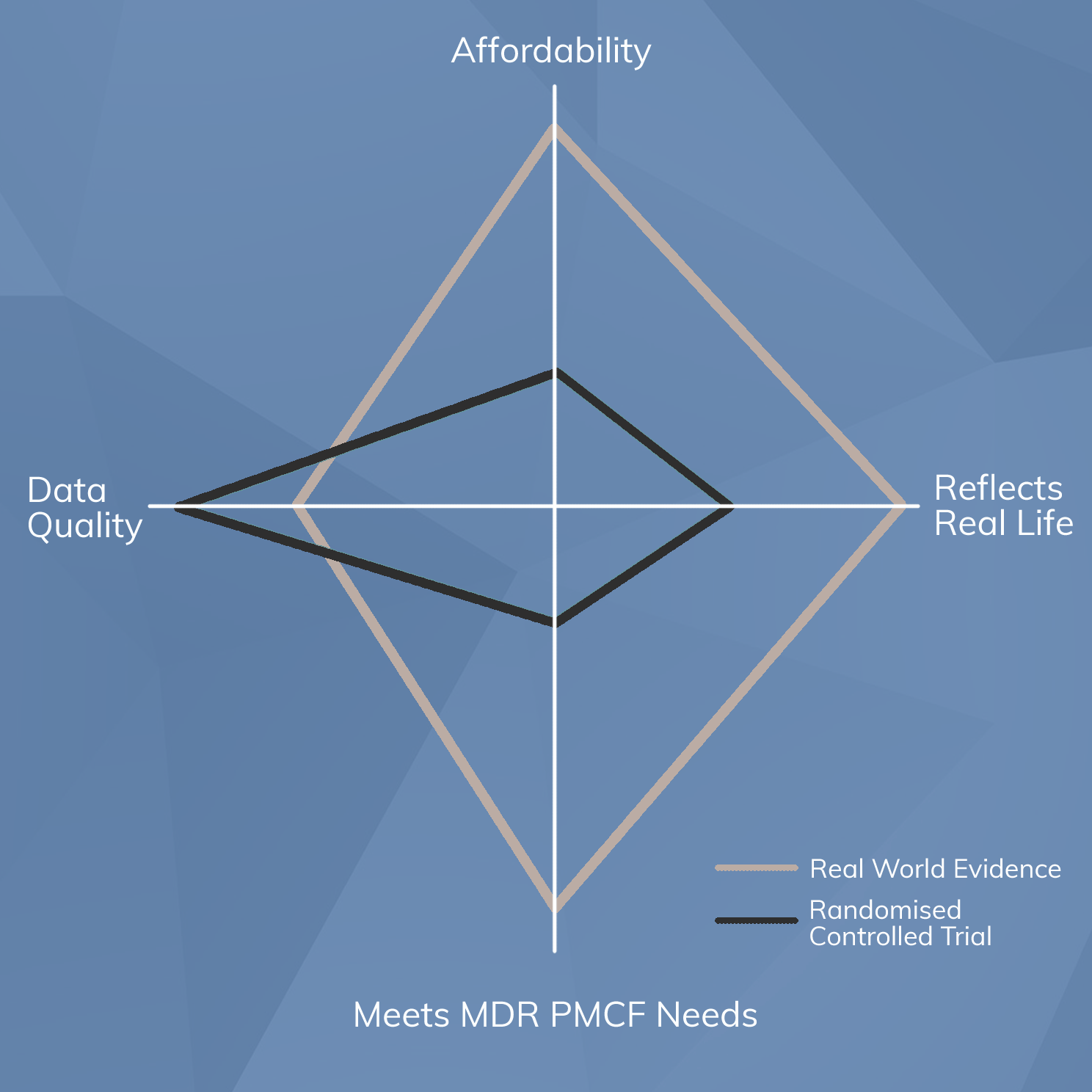Real World Data & EU MDR Compliance
A detailed look into the contribution of Real World Data (RWD) to medical device compliance under the EU Medical Device Regulation
What is Real World Data?
Real World Data (RWD) is clinical data derived from real world use of a medical device on a varied patient population. RWD differs from data generated in standard clinical investigations because it is generally observational rather than interventional — i.e. RWD is generated when a population who would anyway be exposed to the medical product is simply observed, rather than performing a specific intervention for the sake of the study.
RWD is less ‘clean’ than standard clinical data but generally reflects a more heterogeneous patient population that better reflects the ‘true’ population exposed to the medical product in the real world. Although arguably more difficult to generate and interpret than other forms of clinical data, RWD has become progressively more important under modern regulatory systems for drugs and medical devices.
The Medical Device Regulation (EU) 2017/745 requires the “proactive collection and evaluation of clinical data” on the safety and performance of all medical devices throughout the entire lifetime of the medical device. Satisfying this requirement requires manufacturers to develop a Post-Market Clinical Follow-up (PMCF) system that generates some form of RWD.
What are the sources of Real World Data?
RWD can be generated from several different sources, ranging from very basic data sources to complex systems of data collection.
Patient surveys
Patient surveys are a simple source of RWD that is simple to implement. Patients simply answer a range of basic questions after exposure to a medical device and the data is accumulated and analysed. Although simple, in the absence of appropriate controls a survey system is inherently prone to bias since operators could easily choose the “best patients” to include in a survey.
Retrospective cohort reviews
Retrospective cohort reviews are a more sophisticated source of RWD. After obtaining appropriate permissions, patient records could be analysed to obtain information about the safety and performance of a medical intervention that took place in the past, meaning that the review itself cannot directly influence results. However, this method is again susceptible to selection bias unless controls are in place to ensure that investigators select patient records that truly reflect the real patient population, rather than favourable subsets.
Prospective PMCF studies
Prospective PMCF studies, done properly, are a very robust source of RWD. An appropriately designed PMCF study will collect data on the safety and performance of a medical device prospectively and continually, fulfilling the requirements for PMCF in Annex XIV Part B MDR. A PMCF system requires a study protocol that outlines how the data will be collected and that ensures consistency across multiple clinical sites. It should also outline requirements for ensuring that data sets are complete and compliant, and set out methods for analysing the data in a scientifically robust manner.
How is Real World Data analysed?

RWD comprises only the raw data itself - the next step is to apply clinical acumen to analyse and interpret the data in order to understand what it tells us about the safety and performance of a device. The ‘message’ derived from analysing and interpreting RWD is known as Real World Evidence (RWE) — the analysed proof of how a device performs during conditions of normal use.
Interpreting and analysing RWD requires clinical acumen and a scientific methodology. It is made easier and more productive if the need for the data to be interpreted in this way has been accounted for in the design of the study that generated the data. This, in turn, is another argument in favour of medical device product registries that can be designed ‘from the ground up’ by those experienced in the field.


